What Is Ransomware Protection?
Ransomware protection includes strategies, tools, and methodologies to prevent, detect, respond to, and recover from ransomware attacks. Ransomware is a type of malicious software that encrypts files and demands payment for a decryption key, disrupting operations and causing financial and reputational damage.
Effective protection requires a proactive and layered security approach involving endpoint defense, backups, encryption, and real-time monitoring tools. Enterprises adopt ransomware protection to protect critical assets, reduce downtime, and mitigate financial risks. These solutions deploy anti-virus programs, firewalls, anomaly detection systems, and automated backup procedures.
Additionally, protection strategies focus on both prevention and rapid recovery to ensure business continuity. Integrating cybersecurity training for employees further reinforces defenses by reducing the risk of user-targeted attacks, such as phishing.
In this article:
- Key Features of Ransomware Protection for Enterprise
- Ransomware Protection Solutions Focused on Disaster Recovery
- Ransomware Protection Solutions Focused on Detection and Response
Key Features of Ransomware Protection for Enterprise
Effective ransomware protection for enterprises relies on a combination of technologies and practices that form a multi-layered defense. Each layer addresses different stages of a potential attack—from preventing initial access to ensuring rapid recovery.
Some enterprise ransomware protection solutions focus on disaster recovery and provide features like:
- Automated and immutable backups: Maintains up-to-date backups that are resistant to tampering or deletion by ransomware, allowing quick restoration of data without paying a ransom.
- Cross-account backups: Backups are stored in isolated accounts—separate from the production environment—with tightly scoped IAM roles and policies. For example, AWS workloads can back up to an entirely separate AWS account with restrictive access, preventing attackers from accessing or deleting backup data even if they breach the primary account.
- Cross-cloud backups: Critical backup data is replicated to a different cloud provider (e.g., AWS workloads backed up to Azure or Wasabi). This separation offers an additional layer of resilience. If one cloud environment is compromised—due to credential theft or provider outage—the secondary cloud remains isolated and secure.
Other solutions focus on detection and response for ransomware incidents, and provide features like:
- Advanced threat detection and prevention: Uses behavioral analysis, machine learning, and signature-based detection to identify known and unknown ransomware strains before they can execute.
- Real-time endpoint monitoring: Continuously monitors endpoints for suspicious activity, such as unauthorized encryption processes or file modifications, and can automatically isolate affected systems.
- Network segmentation and access control: Limits lateral movement within the network by segmenting systems and enforcing strict access policies, reducing the attack surface and containing breaches.
- Email and web gateway protection: Filters malicious attachments, links, and phishing attempts at the entry points most commonly used by ransomware to gain access to networks.
- Application allowlisting: Allows only approved applications to run, blocking unauthorized software—including ransomware—from executing on protected systems.
- Patch and vulnerability management: Regularly scans and updates software and operating systems to close security gaps that ransomware may exploit.
Ransomware Protection Solutions Focused on Disaster Recovery
1. N2W
N2W provides a ransomware-resilient backup and disaster recovery solution built for AWS and Azure environments. It offers immutable backups, isolated recovery environments, and granular restoration features to help organizations recover quickly from cyber incidents.
Key capabilities include:
- Instant recovery of workloads and files: Enables restoration of entire environments, volumes, or individual files in seconds, minimizing downtime and avoiding data loss.
- Cross-account and cross-cloud backups: Supports storing backup copies in separate AWS or Azure accounts—or even in a different cloud provider—helping ensure recovery options are isolated from the primary environment.
- Immutability for both short- and long-term backups: Short-term recovery points are stored using immutable EBS snapshots, while long-term retention is handled via S3 Glacier, Azure Blob, or Wasabi with object lock.
- Zero trust architecture: Uses multi-factor authentication (MFA), role-based access controls (RBAC), and quorum-based approval to secure access and enforce least-privilege operations.
- Recovery scenario orchestration: Supports defining failover groups in advance, allowing admins to control the order in which resources are restored. This ensures critical dependencies (like DNS, databases, or networking components) are prioritized.
- Granular file-level recovery: Allows restoration of specific files or folders without needing to recover the entire volume.
- Automated DR testing: Enables scheduled disaster recovery tests in isolated environments with support for restoring network settings. Results can be exported for compliance verification.
Regulatory and compliance support: Provides detailed audit logs, retention policies, and data sovereignty controls to help meet GDPR, HIPAA, and ISO 27001 requirements.
Related content: read our guide to ransomware protection services
2. Rubrik
Rubrik provides a ransomware protection solution focused on rapid recovery using immutable backups. Its architecture ensures backup data cannot be altered or deleted, supporting data restoration to a clean state after an attack.
Key features include:
- Immutable backups: Prevents encryption or deletion of backup data through a write-once design.
- Instant recovery: Supports fast restoration to the most recent clean state, enabling full or partial recoveries.
- Impact analysis: Identifies encrypted files and detects suspicious behavior across platforms using machine learning.
- Scope diagnosis: Assesses compromised data and flags sensitive content, including personally identifiable and health information.
- Security integrations: Integrates with SIEM, SOAR, and Syslog platforms to streamline recovery and threat analysis.
Limitations of Rubrik (as reported by users on G2):
- Interface and usability challenges: Users frequently report that the interface is unintuitive and lacks consistency. Navigation across features can be confusing, with some workflows requiring too many steps. Searching for data or backups is also less efficient than expected, which can impact operational speed during recovery scenarios.
- Cost and licensing complexity: Several users mention that the product is expensive and that pricing transparency could be improved. Features like long-term retention or more advanced ransomware detection may incur additional costs, creating budgeting challenges for smaller teams or organizations.
- Limited support for legacy environments: Rubrik may not offer full compatibility with older systems, including legacy operating systems or databases. This creates integration difficulties for organizations that still rely on such environments.
- Backup and restore performance issues: While recovery is generally fast, some users report that backup and restore operations can be slow or inconsistent, particularly when handling large datasets or complex workloads. Performance may vary based on system configuration and network conditions.
- Reporting and analytics limitations: Out-of-the-box reporting tools are often described as basic, lacking depth and customization. Users looking for advanced analytics or compliance reporting may need to rely on third-party integrations or manual workarounds.
- Integration friction: Although Rubrik supports integration with security and IT operations platforms, some users find these integrations complex to set up and maintain. SIEM and SOAR connections, in particular, may require additional configuration or technical expertise.
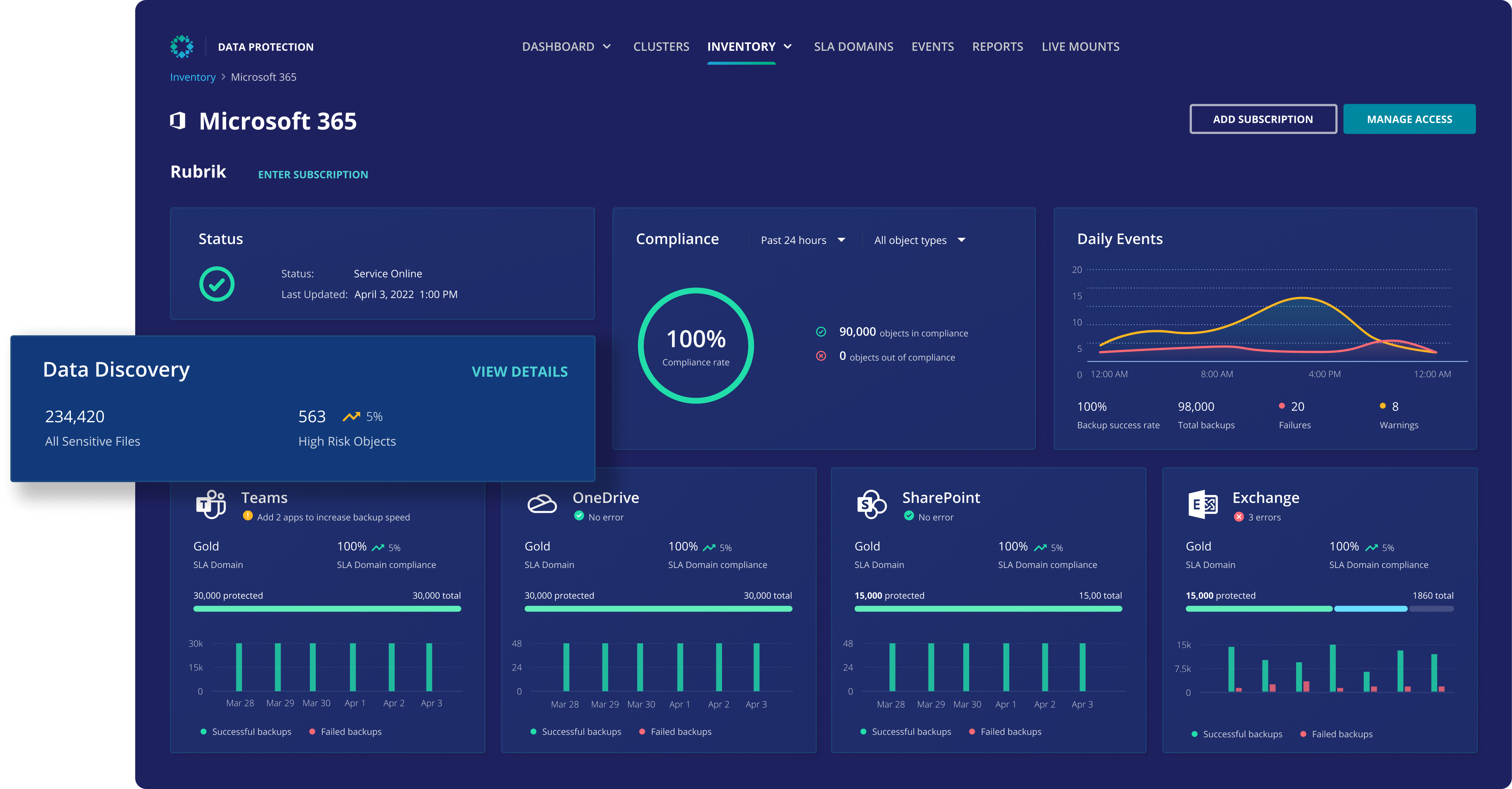
Source: Rubrik
3. Cohesity
Cohesity offers a data protection platform with ransomware defense capabilities built on AI detection, immutable backups, and access controls. The system is designed to detect threats early and support efficient recovery.
Key features include:
- AI-powered threat detection: Applies machine learning to recognize ransomware and insider threats based on data behavior.
- Immutable snapshots: Protects backup data with write-once, read-many (WORM) policies to block tampering.
- Zero trust architecture: Enforces access restrictions using MFA, RBAC, and quorum-based change approvals.
- Integrated threat intelligence: Delivers real-time scanning and threat data with anomaly detection.
- Flexible recovery: Enables rapid restoration of systems and data using fully-prepared backup images.
Limitations of Cohesity:
- Reporting limitations: Many users have noted that the reporting capabilities are basic and lack customization options. Reports often do not provide granular insights or detailed metrics about data protection activities, which limits their usefulness for large enterprise environments. Additionally, generating advanced reports often requires support tickets or leveraging APIs, which may not be ideal for all users.
- Inefficient restore process: Several users have experienced delays during file-level restores, with even small files taking hours to recover. This inefficiency could lead to operational disruptions, especially during critical recovery scenarios. Some users have also reported challenges with restoring SQL databases or instances due to the lack of batch recovery options.
- Cost and licensing concerns: Some users believe the pricing could be more competitive. Certain features, such as advanced cyber resilience tools, are limited or require additional costs, reducing affordability for smaller organizations.
- Interface and usability issues: The user interface, while functional, is not as intuitive or user-friendly as competitors’ platforms. Navigation can feel clunky, and certain tasks require additional steps or workarounds. Users also mentioned that search functionality, such as locating backups, could be more precise and efficient.
- Support for legacy systems: Organizations with older systems have reported difficulties with legacy hardware and software support. For example, Cohesity lacks comprehensive compatibility for older operating systems and backup platforms like Windows 2003 or legacy Oracle workloads, which some competitors still support.
- Delays in feature rollouts: Users have expressed frustration with the pace of feature releases. For example, capabilities such as advanced AI-based analytics, enhanced reporting, and simplified cloud migration tools are often delayed. Additionally, while some features exist, they may not be as robust as expected, requiring frequent updates or fixes.
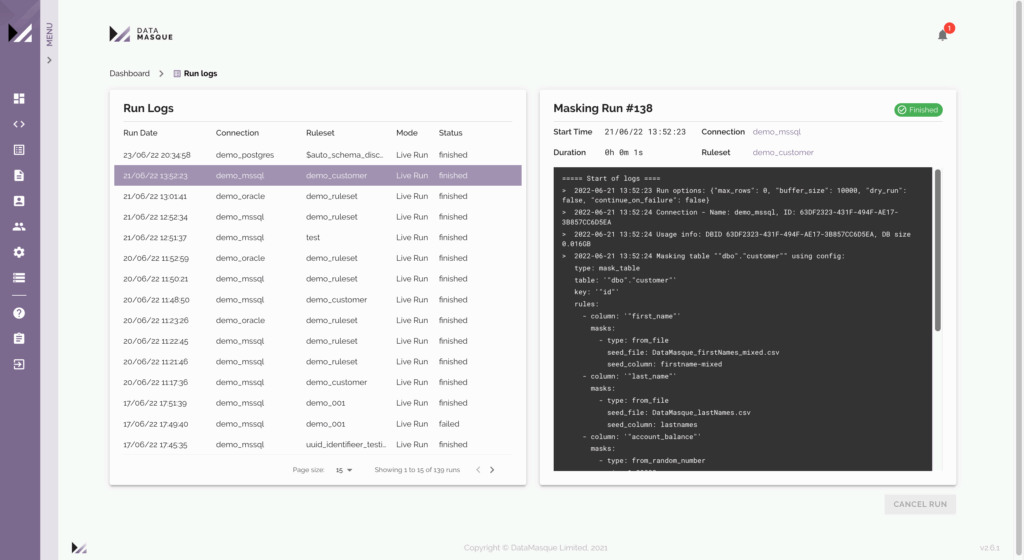
Source: Cohesity
Ransomware Protection Solutions Focused on Detection and Response
4. CrowdStrike Falcon
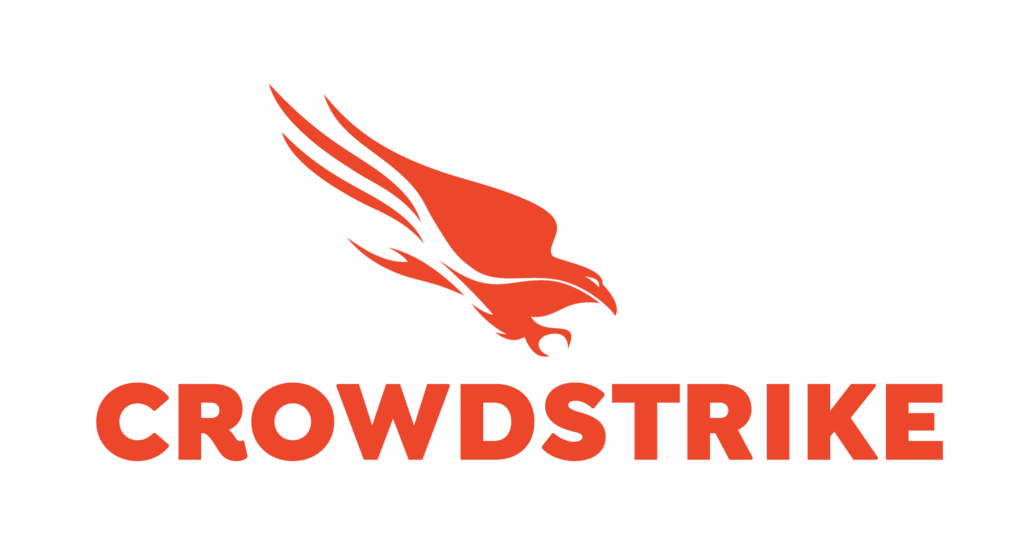
CrowdStrike Falcon is an endpoint security solution focused on early ransomware detection and response. It uses AI-driven analytics, threat hunting, and real-time monitoring to block attacks and support investigations.
Key features include:
- AI-powered ransomware prevention: Uses AI and threat intelligence to identify and block known and unknown ransomware.
- Real-time endpoint monitoring: Tracks system activity for signs of ransomware behavior and attacker movement.
- Threat hunting: Security experts investigate and neutralize ransomware threats before they escalate.
- Adversary emulation and security exercises: Supports testing and training through simulated attack scenarios.
- Evaluation performance: Scored 100% in SE Labs testing across diverse ransomware tactics.
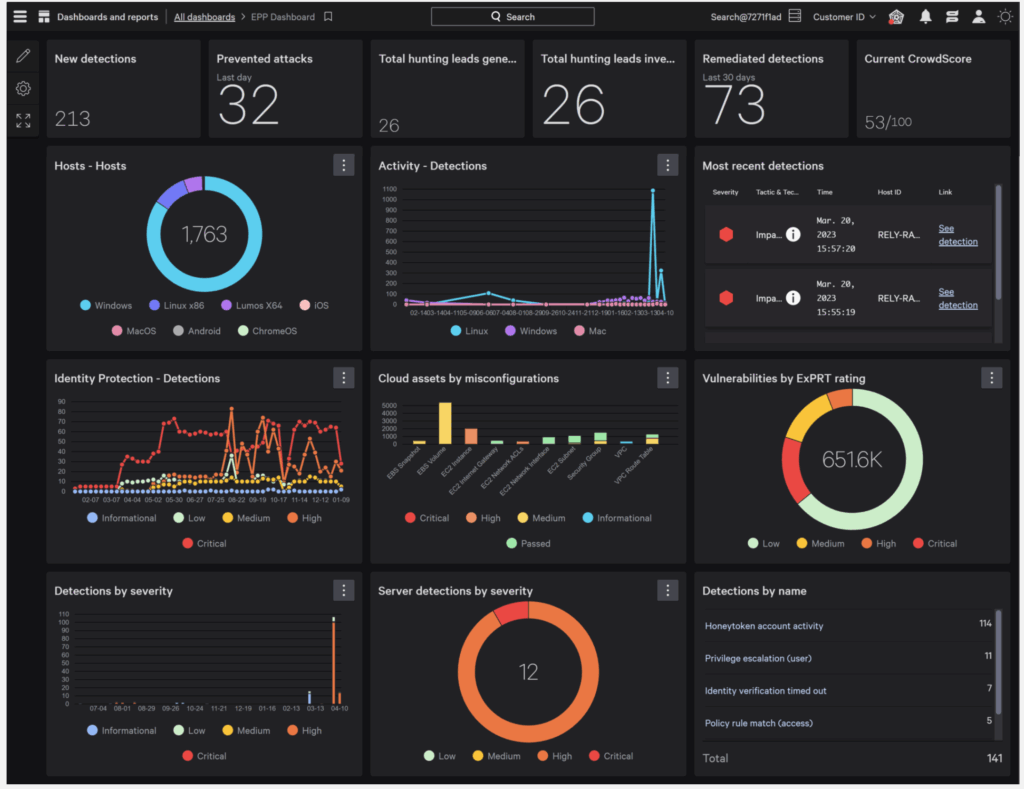
Source: CrowdStrike
5. CyberProof Ransomware Protection

CyberProof delivers managed ransomware protection as part of a broader security service. It combines detection, incident response, and business continuity planning for enterprise environments.
Key features include:
- End-to-end ransomware protection service: Covers assessment, implementation, and ongoing security management.
- Managed ransomware protection: Continuously monitors and mitigates threats without overloading internal teams.
- Incident response and recovery: Provides expert guidance for containment, investigation, and restoration.
- Backup and continuity planning: Supports data availability through structured disaster recovery processes.
- Regulatory compliance support: Aligns services with standards like ISO 27001 and SOC 2.
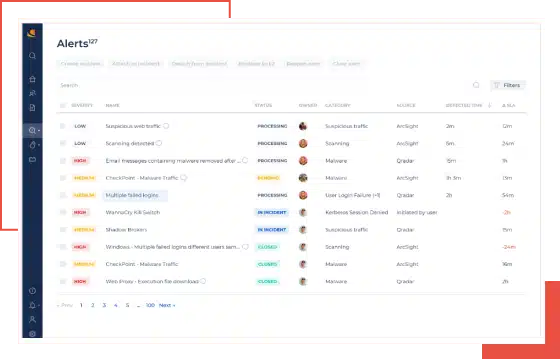
Source: CyberProof
6. Sophos Endpoint
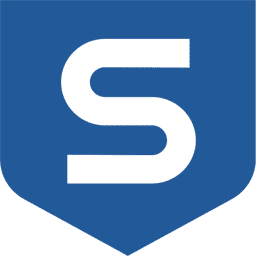
Sophos Endpoint protects against ransomware with behavioral analysis, exploit mitigation, and coordinated defense across systems. It is designed to intercept attacks—including those from inside the network—and automatically recover data.
Key features include:
- Cryptoguard ransomware rollback: Identifies ransomware activity and restores affected files using behavioral methods.
- Remote ransomware protection: Blocks remote file encryption attempts from compromised systems.
- Exploit prevention: Provides automated protection against common exploit techniques.
- Synchronized security architecture: Shares threat intelligence across integrated Sophos tools for coordinated response.
- Threat coverage: Guards against ransomware delivery methods including phishing and malicious downloads.
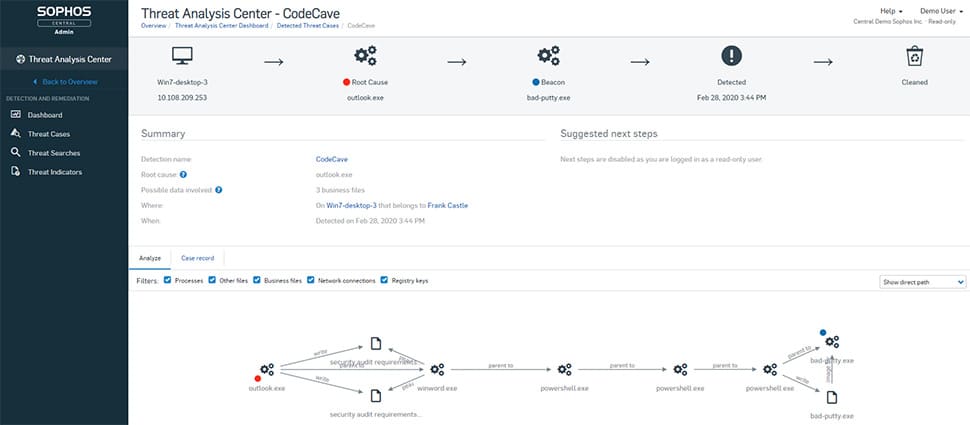
Source: Sophos
Related content: Read our guide to ransomware prevention
Conclusion
Enterprise ransomware protection demands a comprehensive, multi-layered strategy that addresses prevention, detection, and recovery. Effective solutions combine advanced threat analytics, strict access controls, and secure backup practices to minimize attack impact. As ransomware threats evolve, maintaining strong defenses and adapting to new attack vectors remains essential for safeguarding critical assets and ensuring operational continuity.